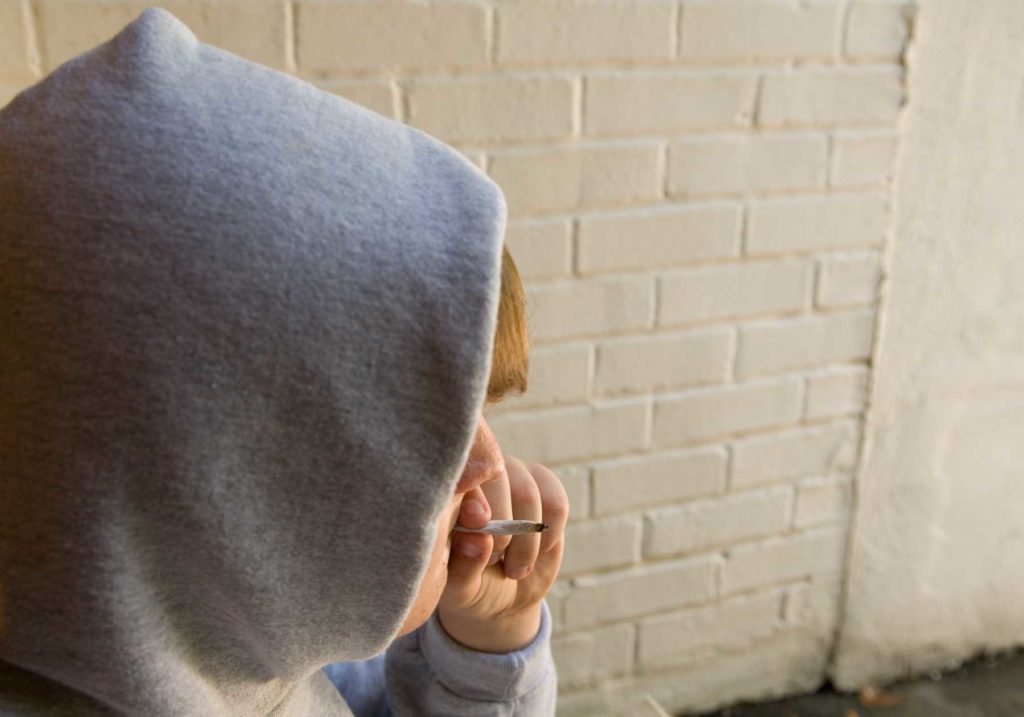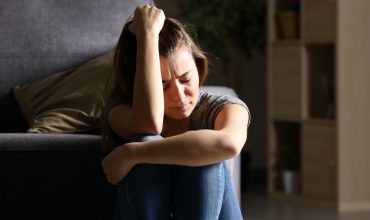
As part of the generation where drug prevention was mostly limited to “Just Say No” and “Don’t Do Drugs” (sometimes coming from parents who did their own experimenting in the 1960s), it’s easy to think that we don’t need to talk to our kids about abstaining. After all, many schools have DARE training. And a little experimentation with alcohol or pot during adolescence won’t kill anyone, right? Unfortunately, remaining naive and turning a blind eye to teen drug use is far too risky—now, more than ever.
Here’s what parents need to know about marijuana today.
Today’s drugs, (yes, even marijuana) are different than those out there just a decade ago. And even if what our kids get their hands on isn’t laced with something deadly, today’s formulations of marijuana can cause psychotic episodes and lead to serious mental health concerns such as schizophrenia, bipolar disorder, depressive and anxiety disorders. Especially since their brains are still developing. Substance abuse is still very much an issue parents must address, as kids often don’t know what, exactly, they are putting into their bodies. (Check out this article from the Wall Stree Journal: More Teens Who Use Marijuana Are Suffering From Psychosis.)
Marijuana Use Isn’t What It Used To Be
Those who may dismiss the research with “What’s the big deal? It’s only pot. I smoked it in high school, and I’m okay” may not be aware of the new manufactured forms that are out there today. There are many more options than dried weed smoked in a joint. Today’s options include edibles, oils, drinks, tinctures, and concentrates. Marijuana can be smoked, eaten, or perhaps most commonly, vaped. In addition, the average potency has changed – it grew from 8.9 percent in 2008 to 17.1 percent in 2017, and today you can find marijuana with concentrations of more than 90 percent.
This may explain in part why cannabis use among those under age 25 resulted in more than half a million ER visits from 2019 through 2022. The majority of these involved those age 15 to 24.
European researchers showed that both high potency (more than 10 percent THC) and high frequency of cannabis use have increased the odds of psychotic disorder. One long term study released by Cambridge University Press reports that cannabis use may be responsible for up to 30 percent of schizophrenia in adult males age 21 to 30. Another study, through the National Institutes of Health, showed increased levels of suicidal ideation in 18-35 year olds, particularly women.
This is no joke.
Related: Our Teen Was at Risk for Suicide, Here Are 7 Steps We Took Next
Lack of Regulation Can Mean Higher Potency
In Cannabis Concentration and Health Risks, A report for the Washington State Prevention Research Subcommittee, researchers report that “cannabis as we knew it has changed. Processing, extraction, concentration, and the addition of new ingredients have become common. Highly potent manufactured cannabis products are available in retail stores, with THC content varying from 60-90%. They don’t resemble the plant — they are as close to the cannabis plant as strawberries are to frosted strawberry pop tarts.”
Another study explains: “There has been a recent shift toward cannabis products with higher THC levels and greater potencies. For example, THC concentration of dried flower can range from less than 1% to 30%, whereas cannabis extract products such as oils can exceed 90% THC.” They also point out that “CBD levels also vary across products, ranging from ‘CBD-rich’ products that contain little THC, to more ‘balanced’ products with similar concentrations. In Canada and the US, smoking dried flower remains the most common mode of administration; however, the prevalence of edibles, vaped and orally ingested oils is increasing, particularly among youth.”
What Parents Can Do to Keep Their Teens Safe
Get familiar with the lingo. Marijuana concentrates are sometimes called 710 (“OIL” flipped and backwards), honey oil, wax, ear wax, budder, butane hash oil, butane honey oil, BHO, shutter, dabs, and black glass. With the consistency of honey or butter, these concentrates can be mixed into foods or drinks or smoked in water or oil pipes. Many users choose e-cigarettes, or vapes, largely because this makes it easy to conceal – there is no smoke and minimal if any odor. This is commonly referred to as “dabbing” (for the dab of concentrate used) or “vaping.”
Watch for signs of THC-induced psychosis: visual and/or audio hallucinations, delusions, paranoia, altered reality, impaired cognition, unexplained moods, sleep issues, and mental health problems like depression and anxiety. These symptoms, often said to be effects of marijuana use, have been reported to last a full day or even years.
Related: Mental Health Issues Stopped My Son From Graduating High School On Time
Know the laws, and if you are so inclined, make your opinion known. Marijuana or cannabis is legal for medical use in 37 states and for recreational use in 19 states and Washington, DC. It is currently illegal under federal law. But this may be changing soon. The FDA recently recommended reclassifying marijuana as a Schedule III drug on par with drugs such as Tylenol with Codeine, ketamine, or testosterone. This change would acknowledge the potential medical benefits and the determination that the health risks are lower than that of Schedule I drugs such as heroin. This reclassification would mean a prescription would be required for use and also opens up the drug to more and better research on the drug.
The hard truth is that kids are trying drugs, and oftentimes, they are more harmful than parents realize. Although many moms and dads might see a little experimentation with marijuana as a right of passage from adolescence to adulthood, today’s pot isn’t the pot of their youth. Parents of teens must educate themselves about the different kinds of cannabis products with varying levels of unregulated THC that their kids can access. And, they should know that drug abuse is related to schizophrenia, suicide ideation, and ER visits for young people—even from just what might seem like harmless marijuana use.
Know the lingo. Know the signs. Talk to your kids openly and honestly about the risks.
They only get one chance at this thing called life.
Are you looking for more encouragement for raising your teens and tweens?
Check out this book, Loving Hard When They’re Hard to Love, by the owner of Parenting Teens & Tweens, Whitney Fleming. The book contains 55 relatable essays about raising tweens and teens in today’s modern and chaotic world.

Parenting teens and tweens is a tough job, but you’re not alone. Here are some posts other parents have found helpful:
The Most Important Reason Teens Should Not Have Their Phones At Night
7 Valentine’s Day Ideas for Teens That Will Make Them Feel Loved
The Best Netflix Shows for Tweens and Teens Families Can Enjoy Together
How to Deal with Teenage Backtalk and Disrespect
*This post may contain affiliate links where we earn a small commission for purchases made from our site.






zjfo62